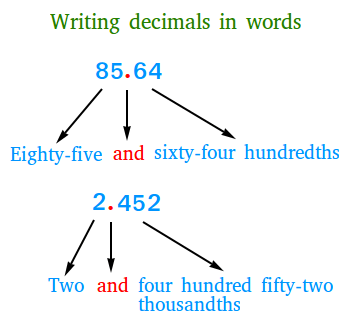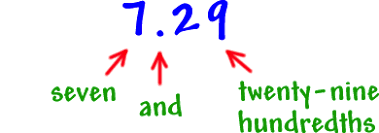It’s normal that as you progress through the different levels of math, you will be required to work with different types of numbers. You will not only start working with negative numbers but also with decimals. And this is where many students struggle with.
Learn how to round numbers up and down.
So, What Are Decimals?

Simply put, decimals are numbers that include a decimal point. One of the ways that you often see decimals is when they are represented by fractions.
The truth is that decimals aren’t difficult at all. However, as you progress and calculations start being a bit more complicated, it is wise to have a good grasp about decimals and other math basic topics.
Before we show you how to read decimals the right way, we believe that it is important that you understand place values.
Looking to round decimals to the nearest tens?
Understanding Place Values

One of the things that you need to keep in mind about decimals is that each slot you can put a number on to the left of the decimal point has a specific value applied to it. Besides, it is also important to remember that if there’s nothing to the right of the decimal point, you usually don’t write the decimal point at all.
So, what are the “slots” called to the left of the decimal point?
Learn how to round a number to the nearest whole.
Starting from the decimal point and working left, the first slot is called the ones place. However, notice that the place value applies to the “slot” the number goes in, not the number itself. So it keeps the same name, no matter what number is in that place. Whether you say 1, 2, 5, 9, or any other single-digit number, they all occupy the same “slot”: the ones place. The next place to the left is the tens place. To the left of that is the hundreds place, and so on.
How To Read Decimals

When you are looking to know how to read decimals, you should keep in mind that you can read them in two different ways.
Use our calculator to round decimals to the nearest thousand.
The first way that you can read decimals is to simply read the digits off. Here’s an example. Let’s say that you want to read the decimal 5.6. In this case, and considering this way to read decimals, you would simply read it as five point six. Here’s another example: 98.95 can be read as ninety eight point ninety five.
However, if you want to be more technical, then there is a different way to read decimals. In this case, you would simply ignore the decimal point and read the number as a whole number; then just say the decimal unit where the last digit falls.
Here’s an example: 0.038. In this case, and ignoring the decimal point, you would read 038 as the whole number “Thirty-eight.” The last digit, 8, falls in the thousandths place. Its name is “Thirty-eight thousandths.”
Here’s a different example: 14.0029. This is called a mixed number. The decimal point separates the whole number 14 on the left, from the decimal fraction on the right. In a mixed number, we read the decimal point as “and.” So, you should read it as “14 and 29 ten-thousandths.”